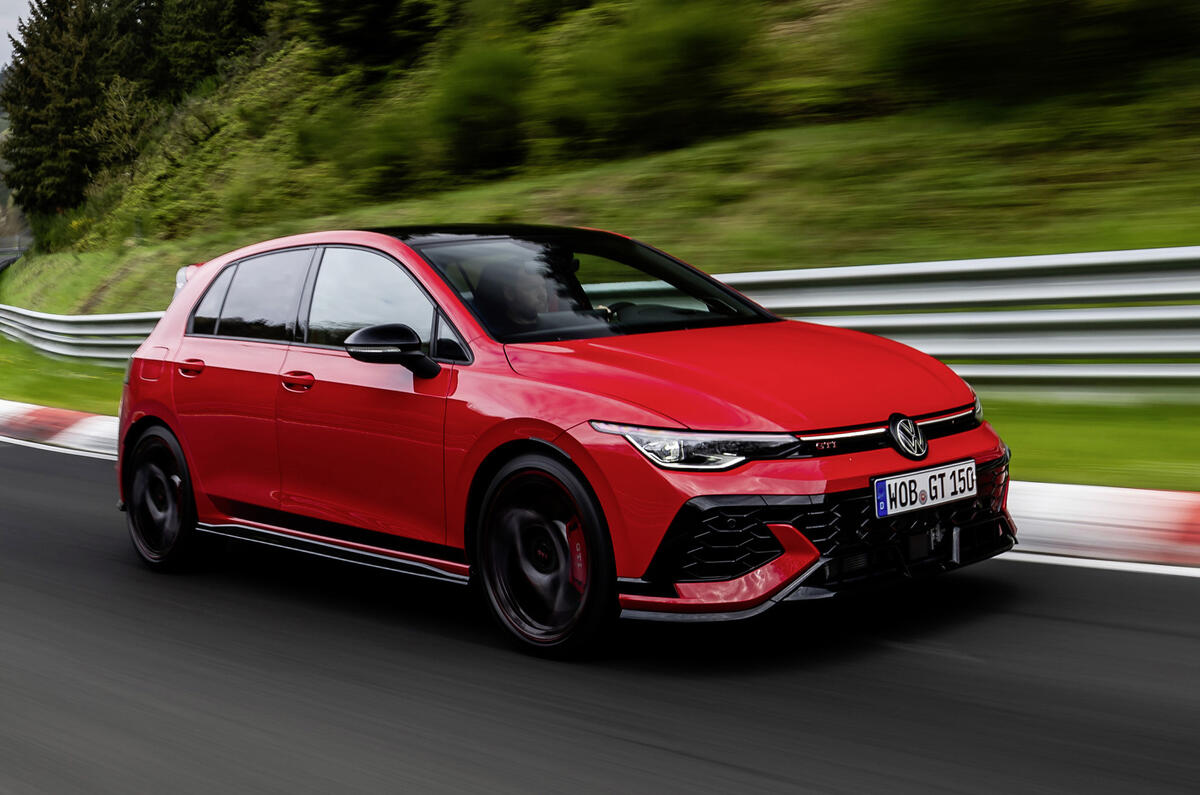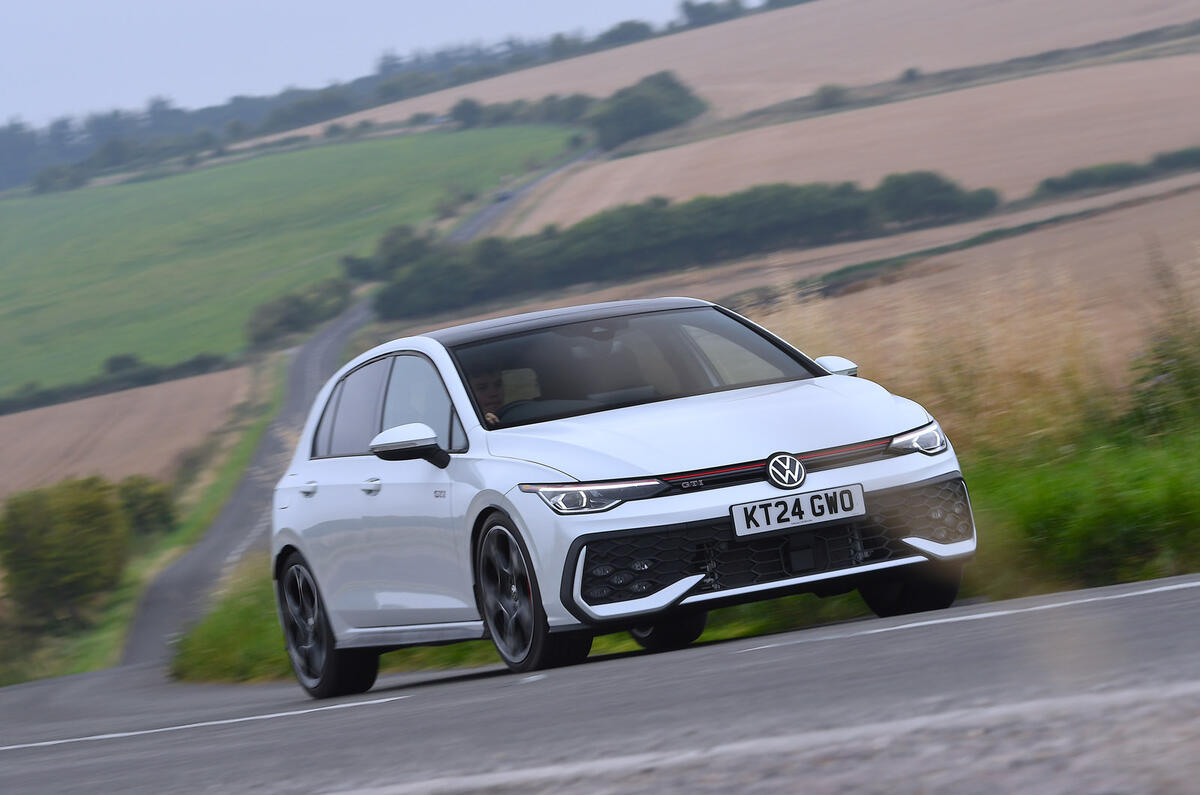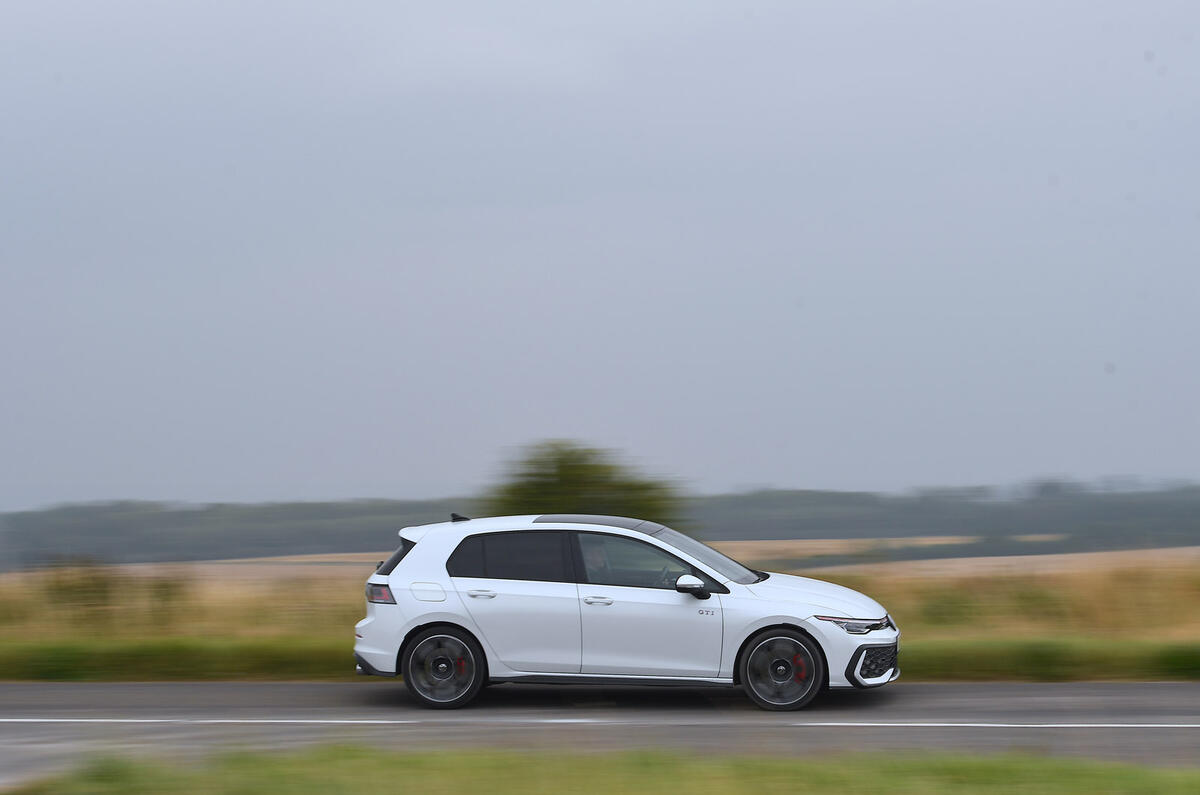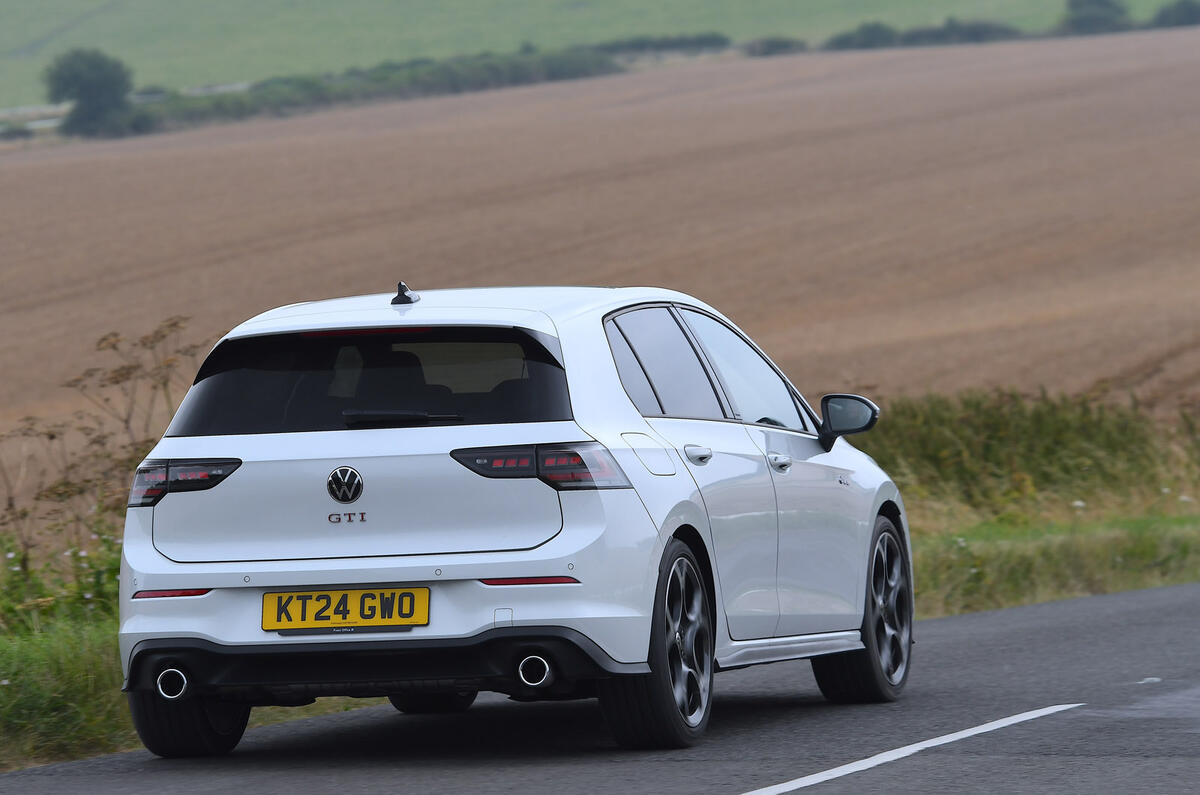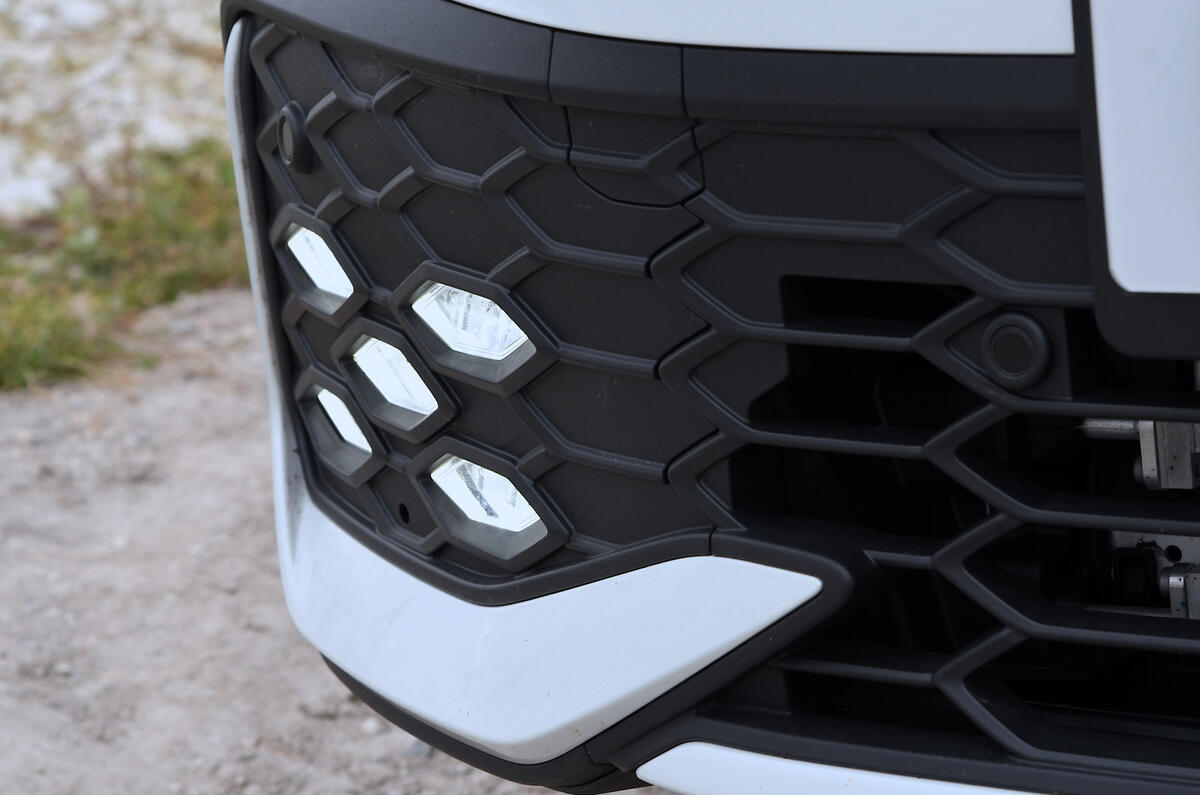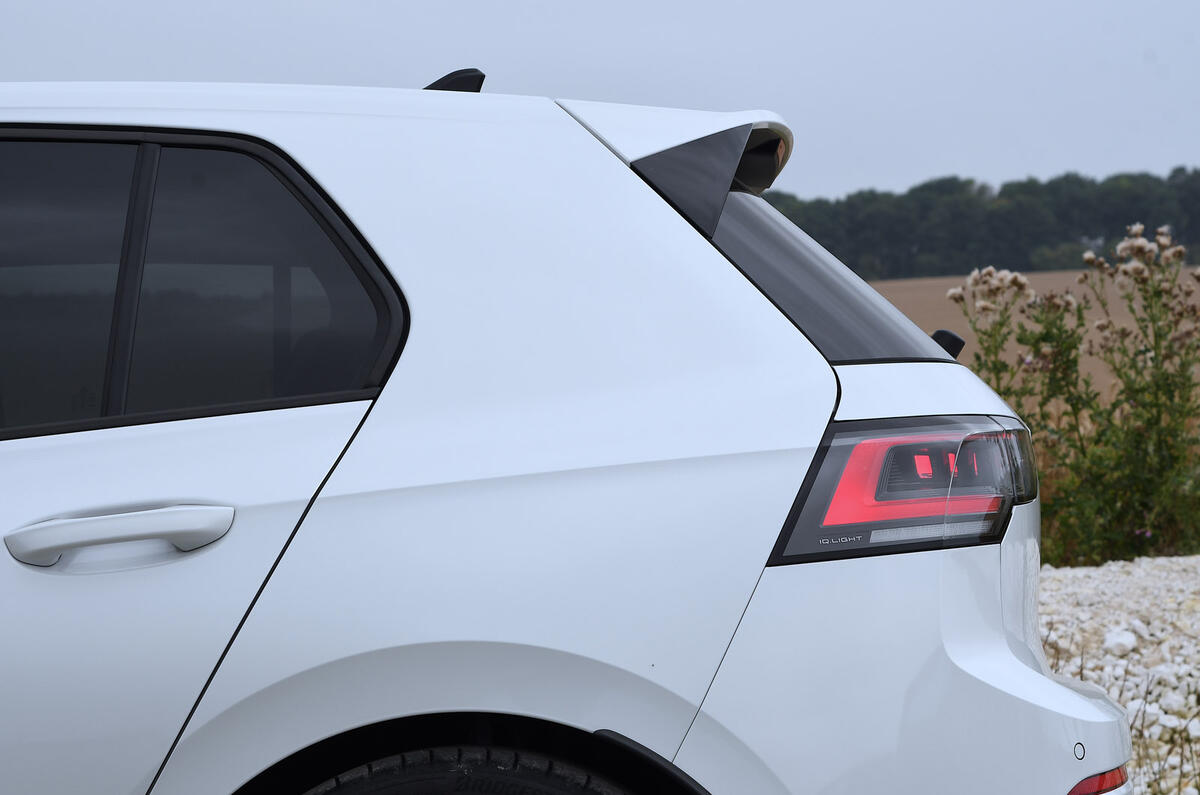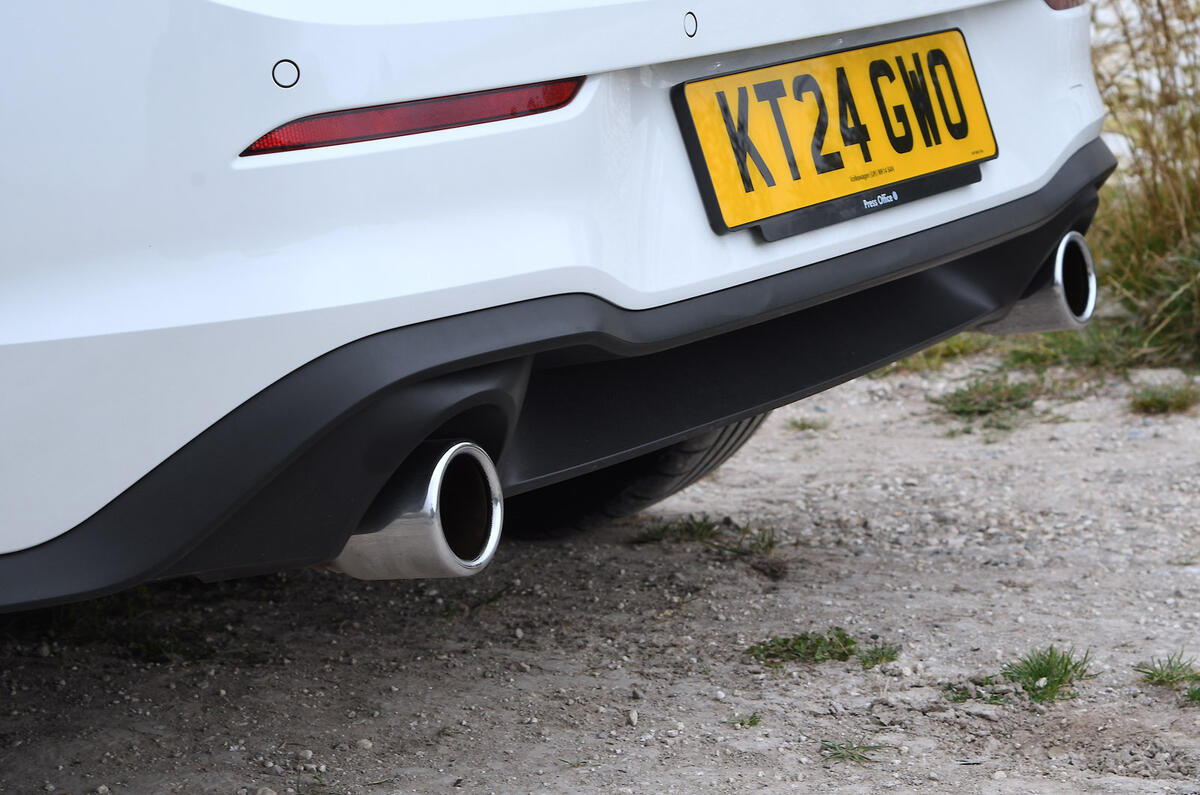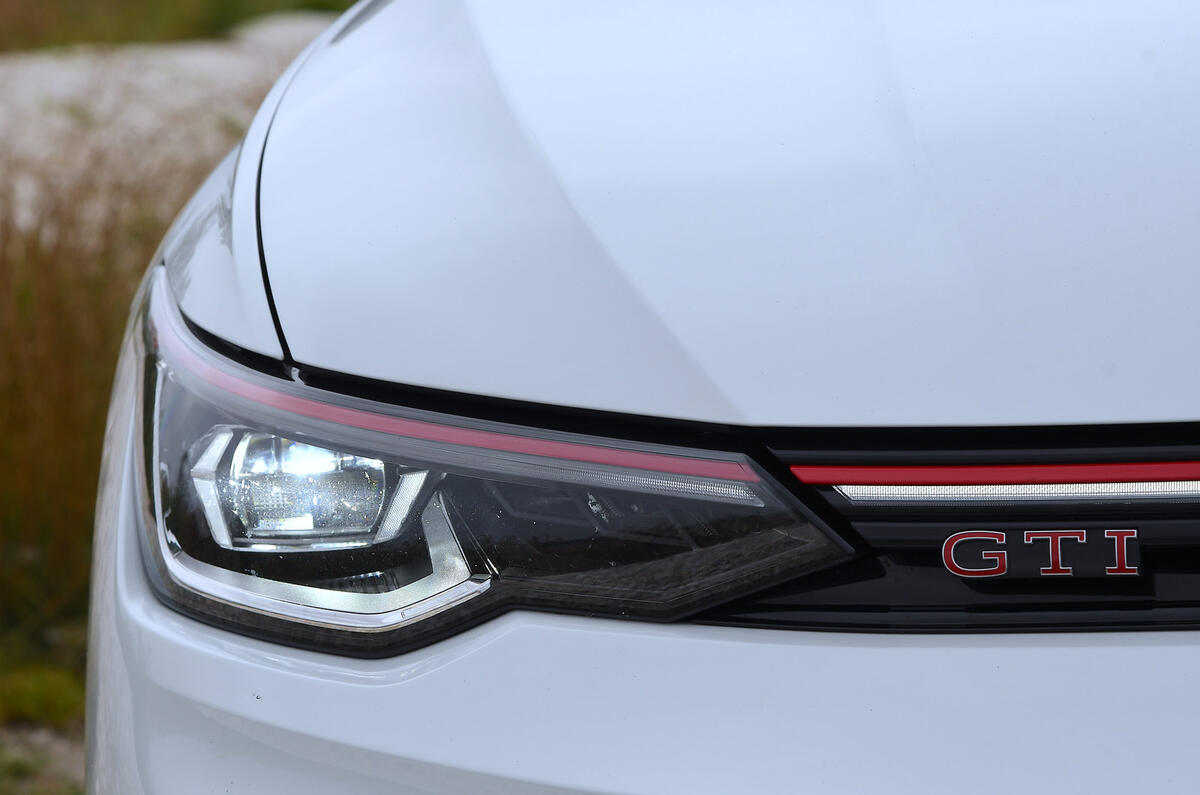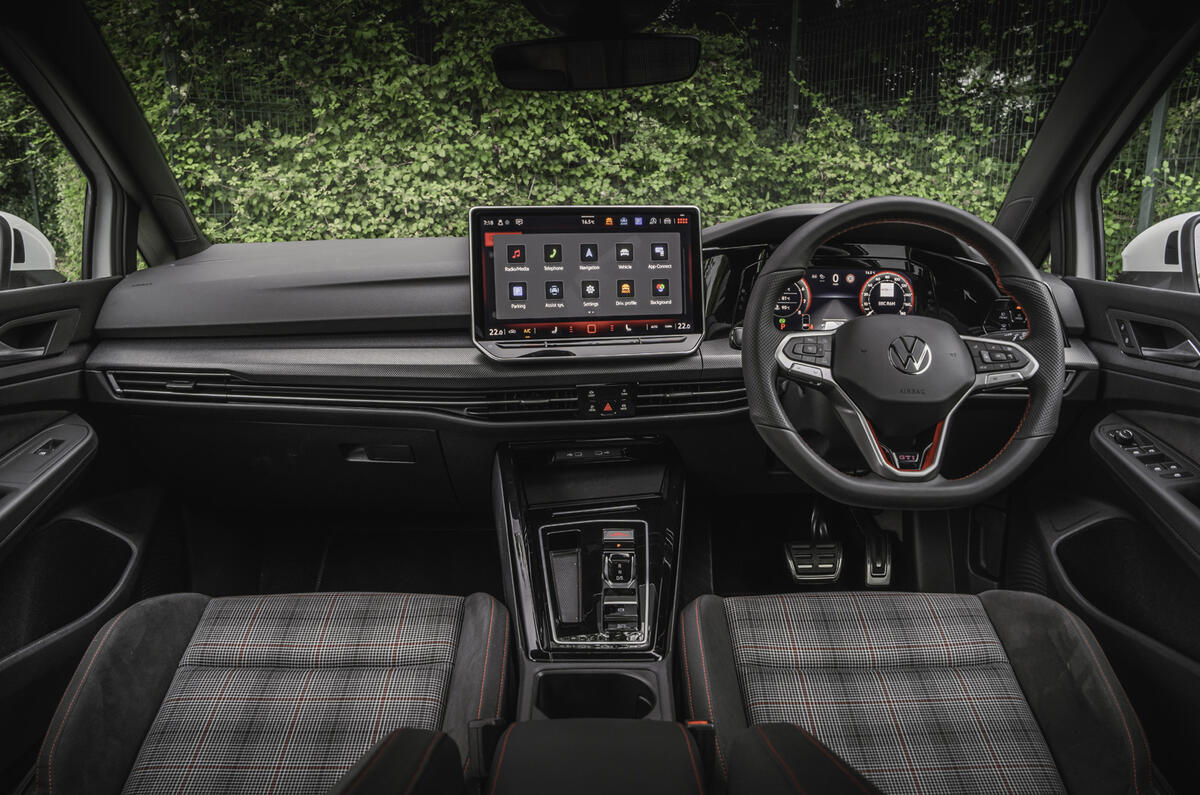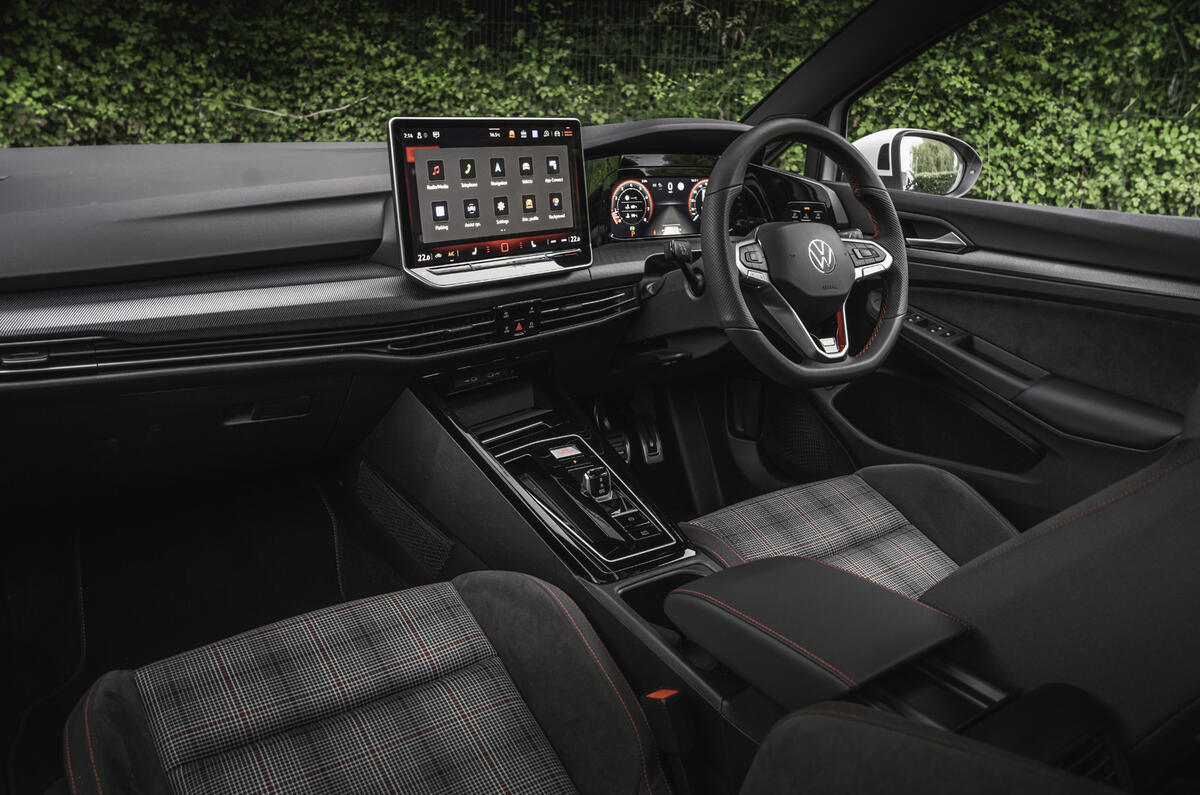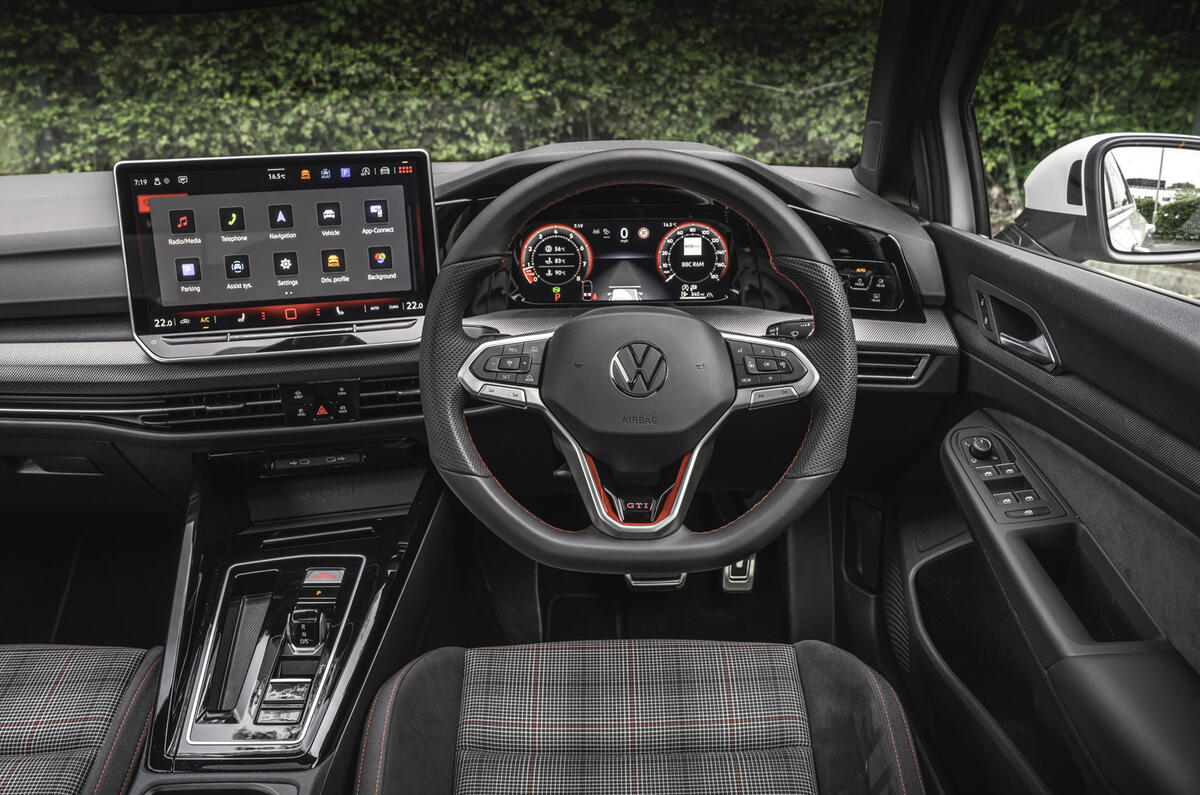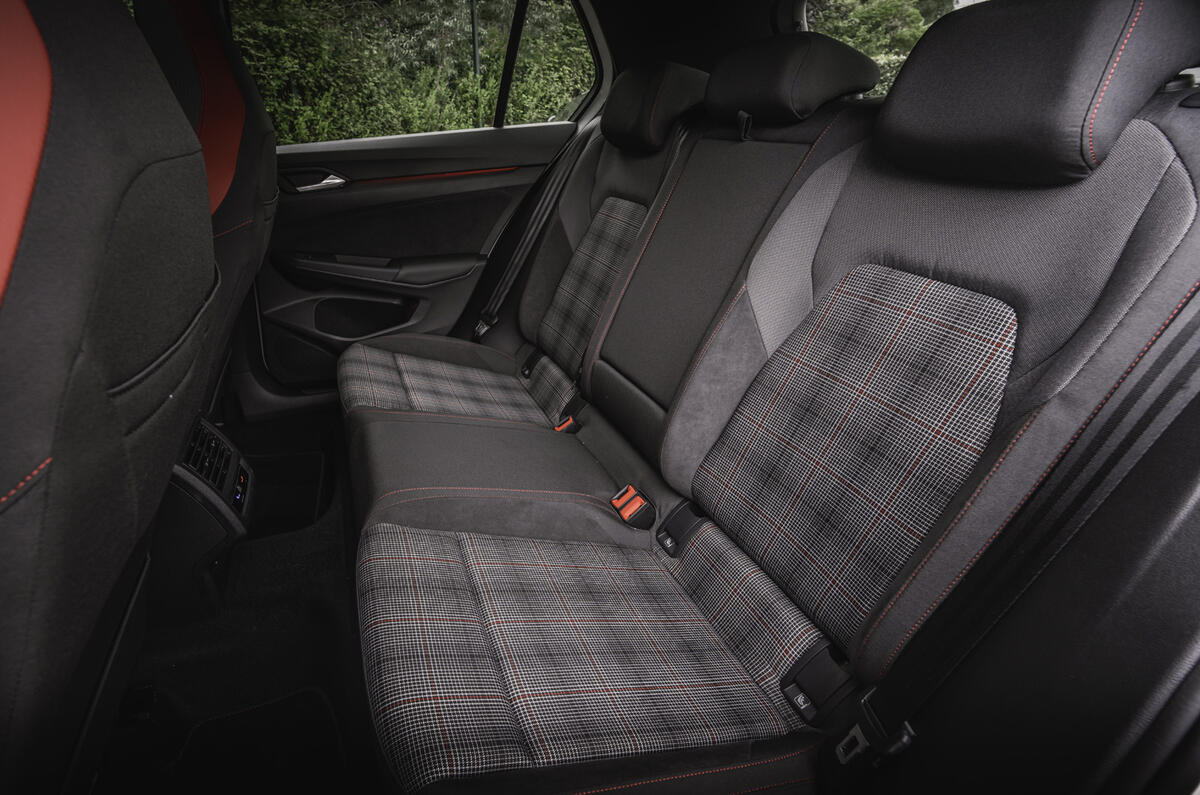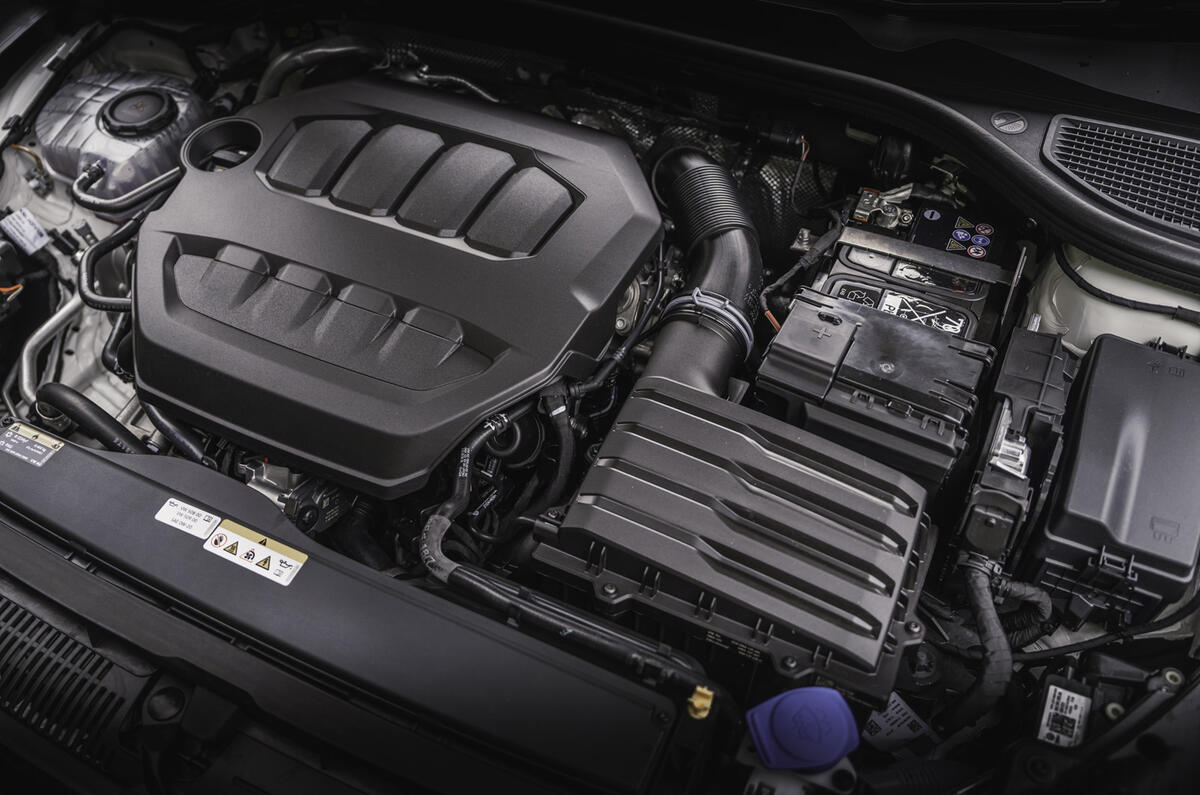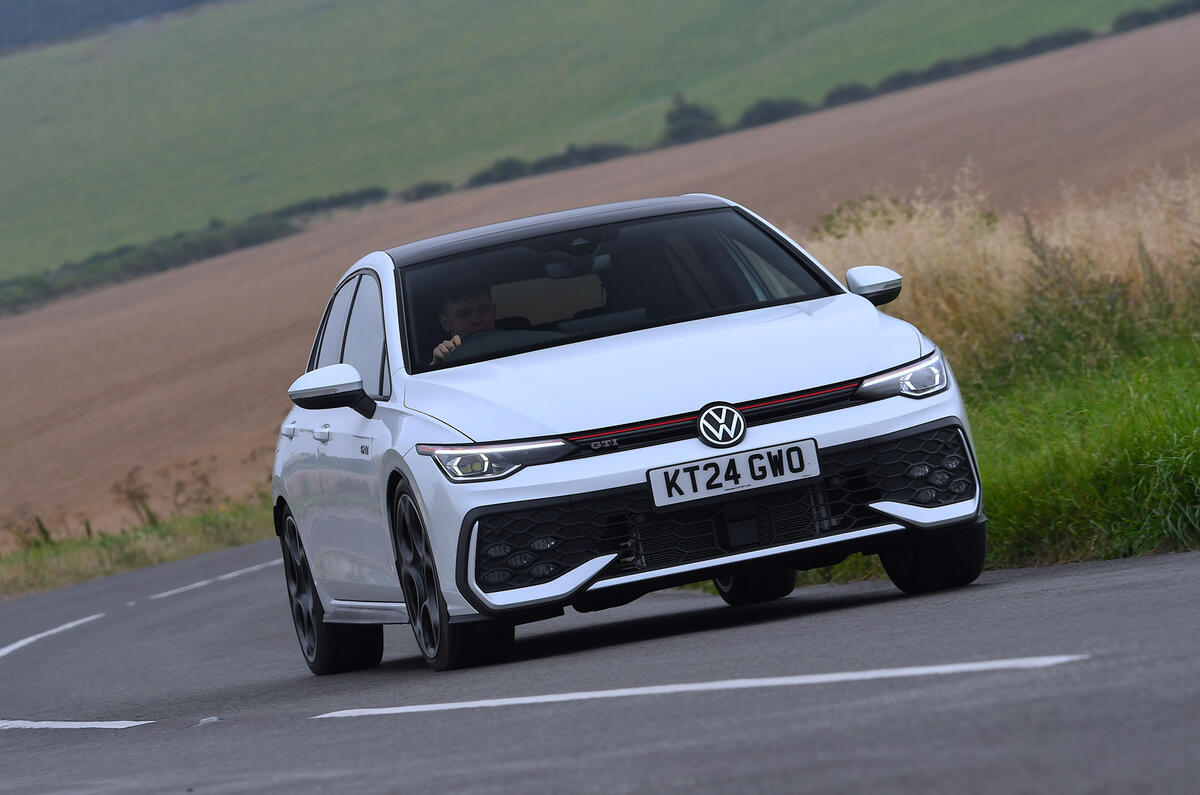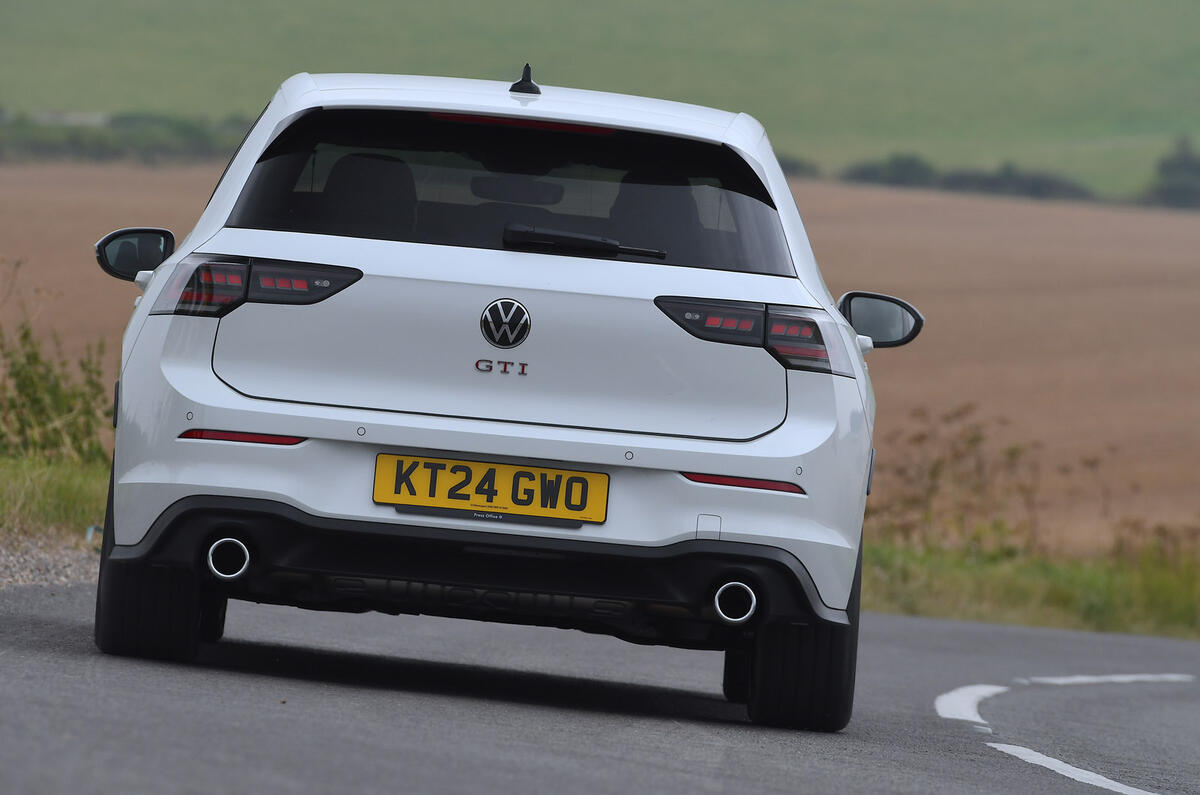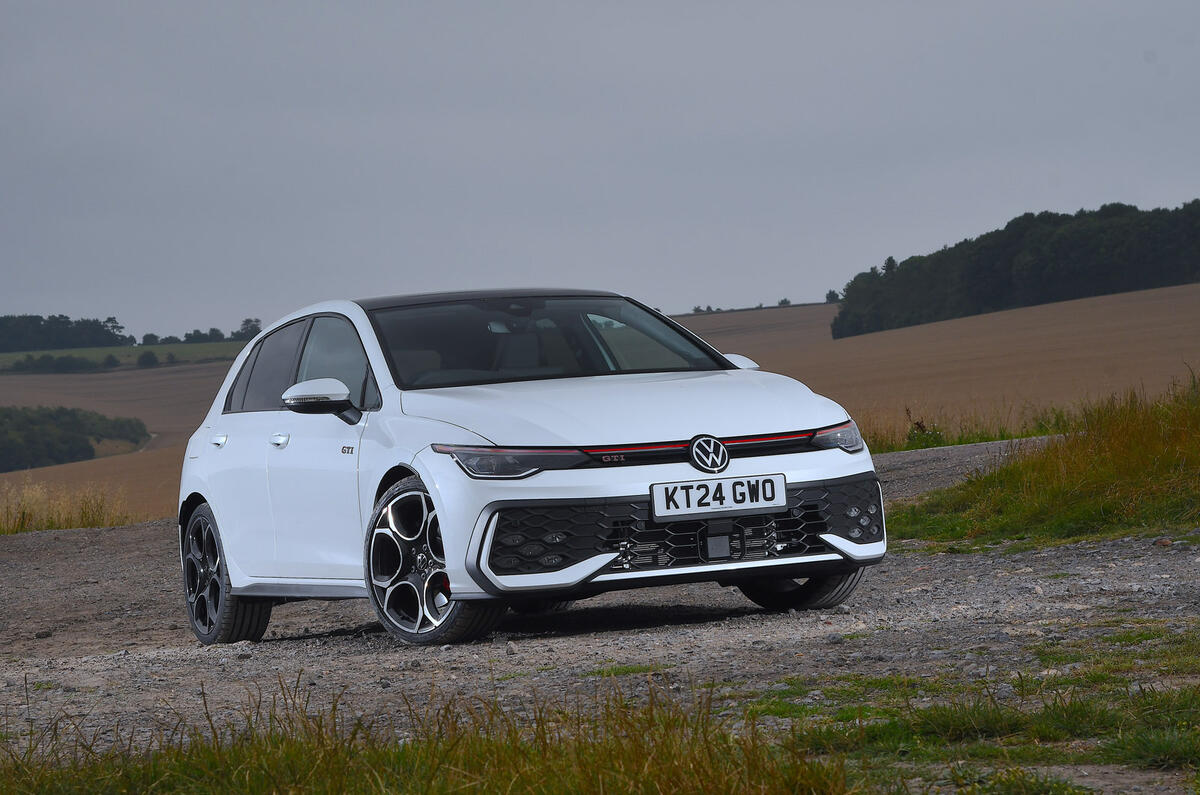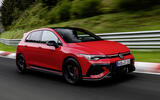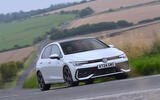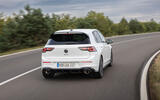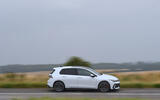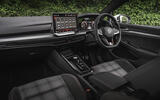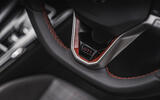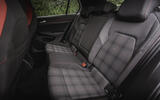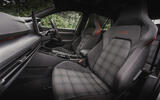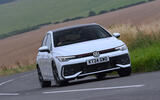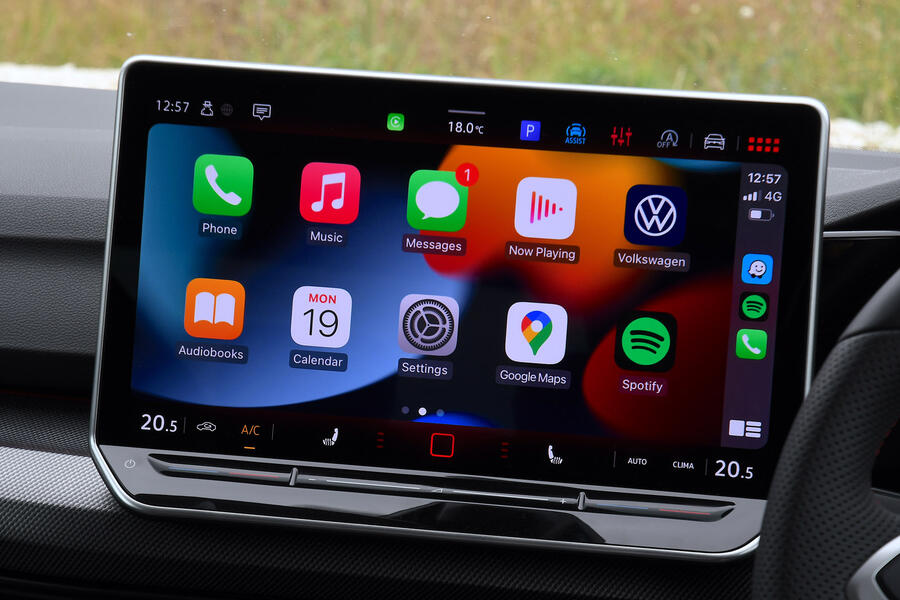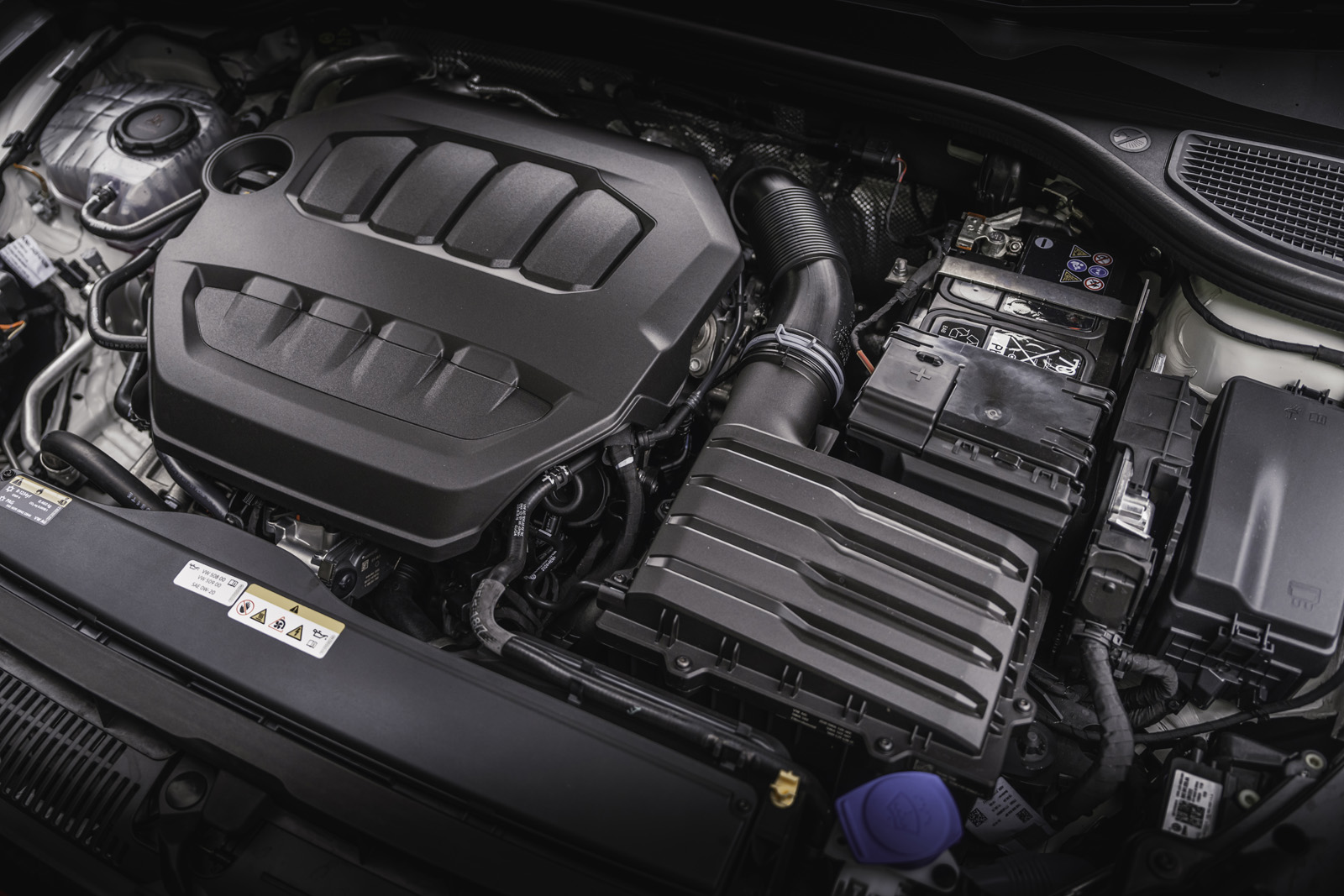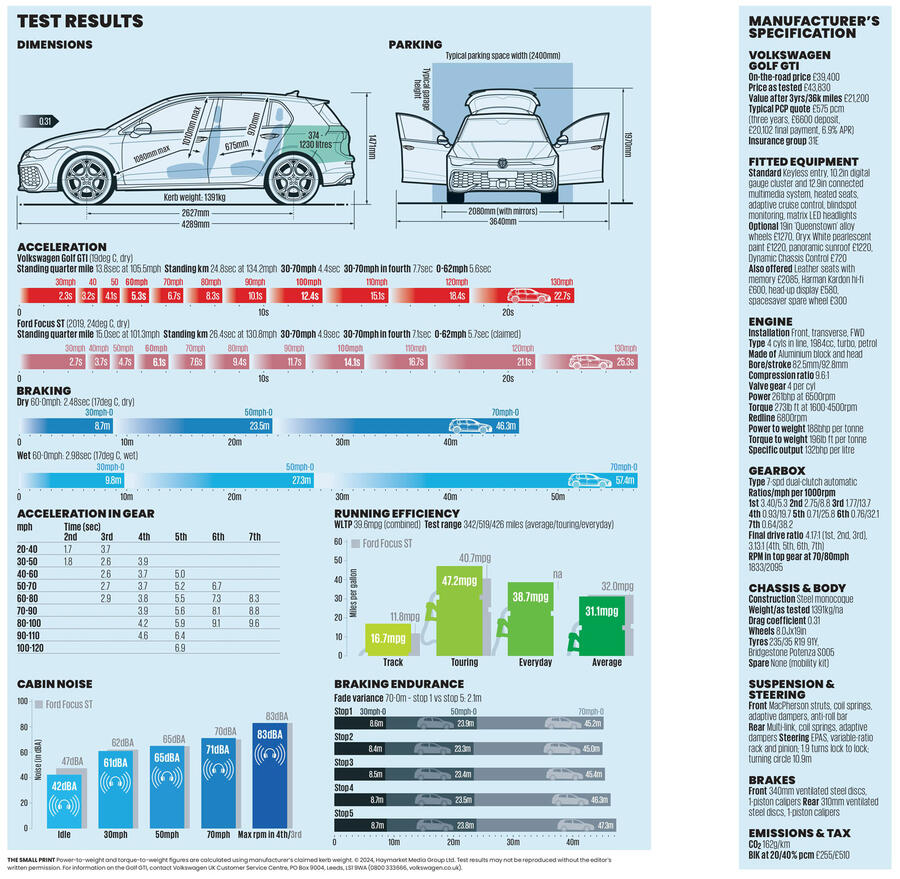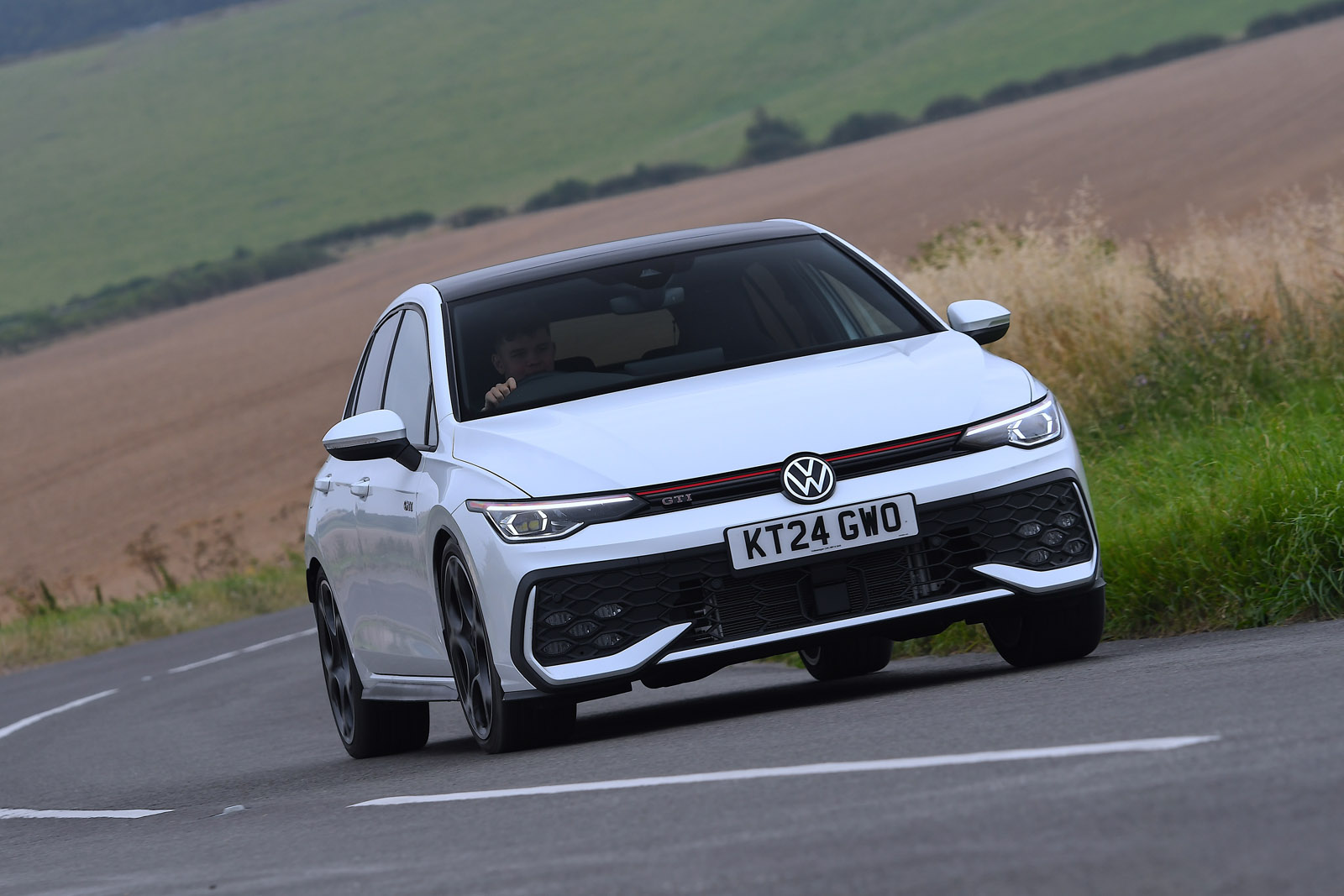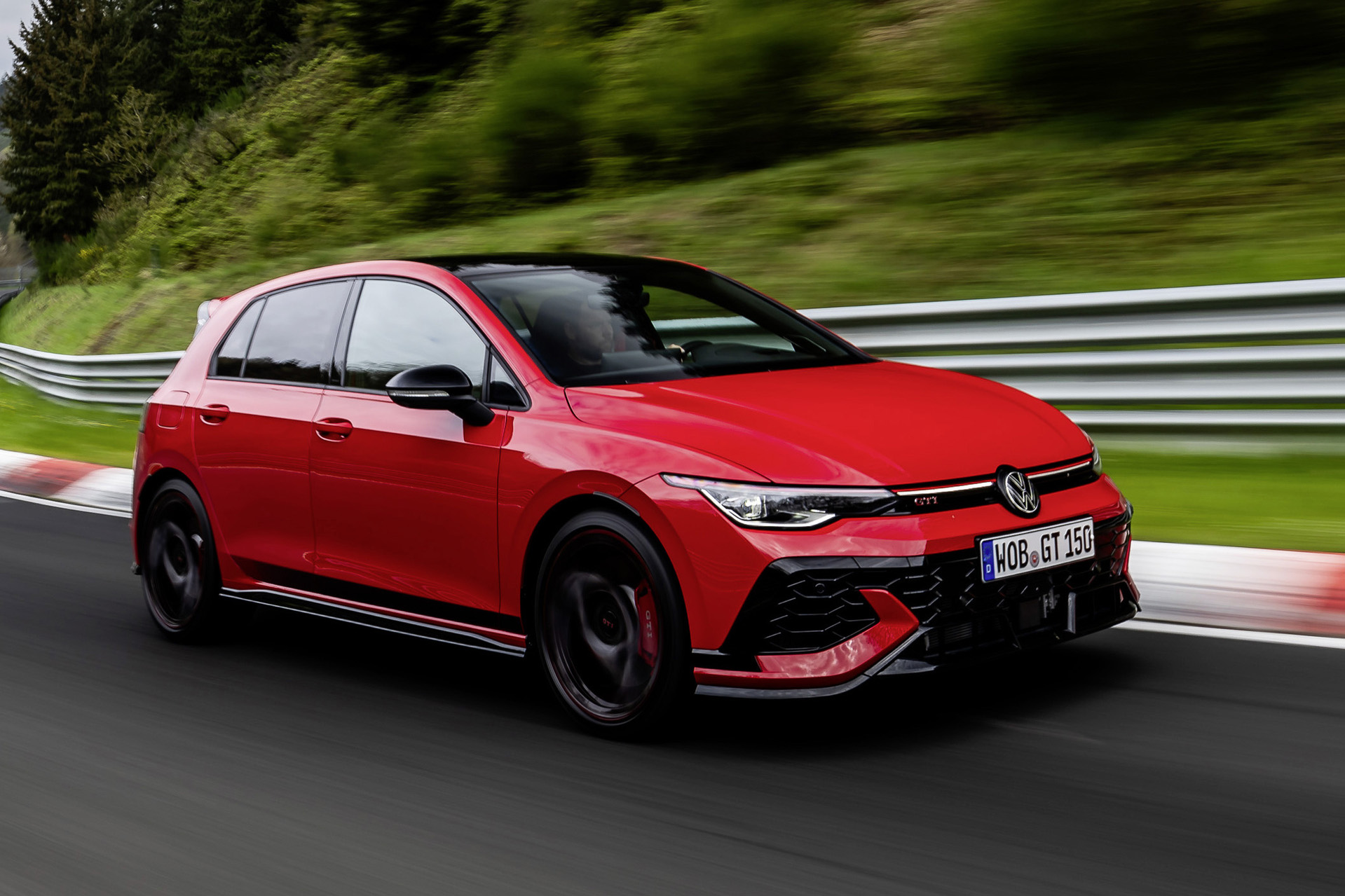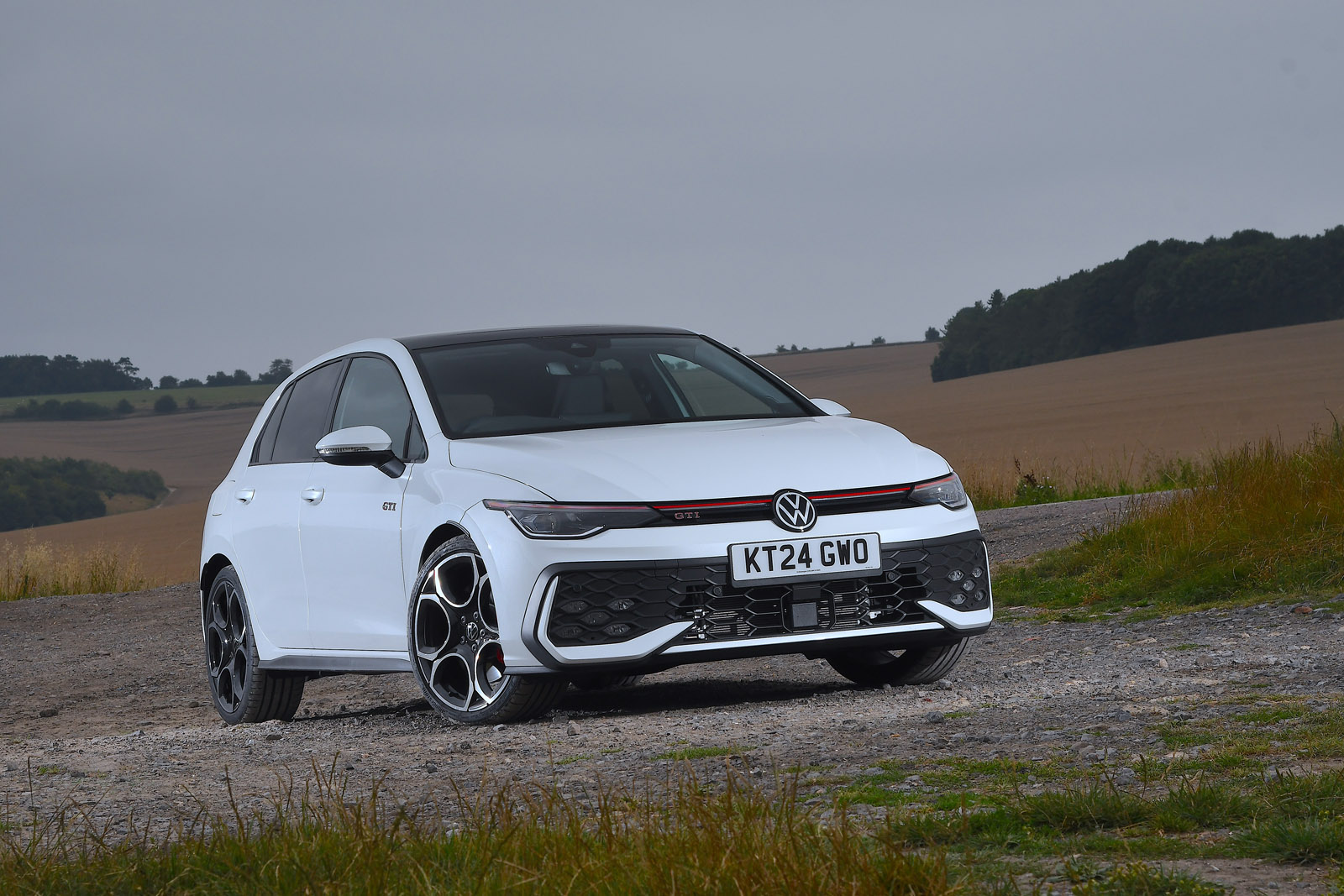In short, the GTI goes down the road competently and dependably. But then so does a regular Golf. If anything, the less racy version does it with more fluidity and more progression, along with more feel from its slower steering. And if it weren’t for non-switchable ESC, it would do it with more throttle-adjustability. If involvement ranks higher on your list of priorities than grip and raw speed, a Golf 1.5 TSI is more fun. And on adaptive dampers and smaller wheels, it’s naturally more comfortable, too.
Track notes
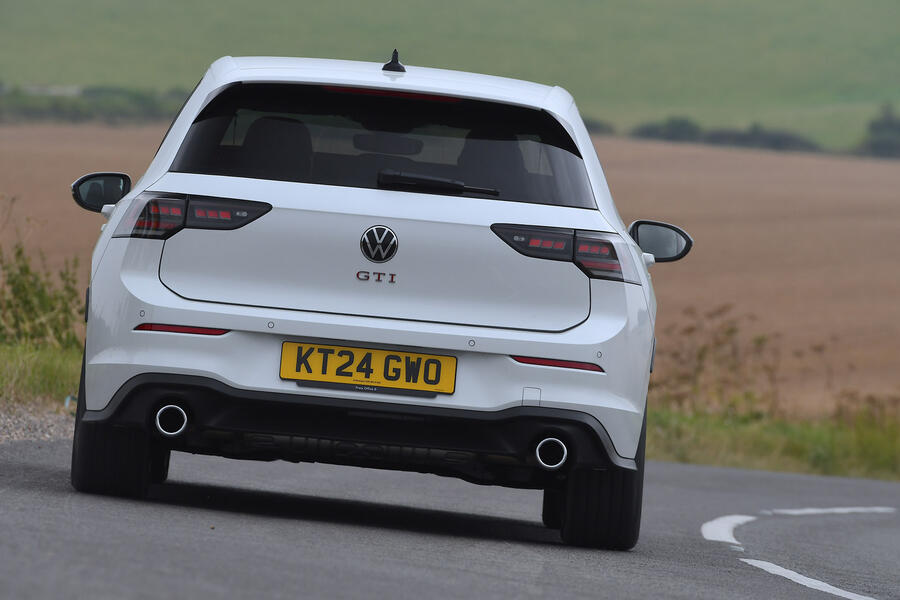
Where the lower-rung Golf would definitely struggle, however, is on track. The GTI’s extra performance means you’re not merely waiting for the straights to end; it has enough grip to lean on, and the more performance-oriented tyres and brakes won’t wilt after a few laps.
In dry conditions, the XDS differential lock does a good job at avoiding a spinning inside front wheel, and a bit of trail braking finally does let you rotate the car into corners. It’s never as entertaining as a Civic Type R or Focus ST would be, but in this case the GTI’s dependability and gentle responses would make it a good car for getting to grips with the basics of track driving. Then again, you might prefer to use a less valuable car for such pursuits.
On MIRA’s wet handling course, the stability control proved itself to be well tuned. Leave everything on and it lets you maintain smooth progress while keeping any slides at bay. The Sport mode is quite permissive and reveals the GTI’s playful side (if only in slippery conditions) while ensuring that things don’t get out of hand. Pleasingly, ‘Off’ mode really does feel like it turns everything off.
Golf GTI Clubsport handling

Unique suspension tuning, including a further 5mm reduction in ride height and more aggressive front and rear wheel camber angles give the Clubsport version heightened responses, while firmer suspension further ups the body control. There is a slight trade-off in ride comfort and rolling refinement, but in a car conceived for added performance and handling prowess, it is fully warranted, heightening the dynamic potential and driving experience.
You don't get the same level of traction as that offered by the more powerful four-wheel-drive Golf R, but Volkswagen's electronic limited-slip differential lock ensures the front-wheel-drive GTI Clubsport deploys its power with precision and authority, even on damp roads. It’s terrifically composed on a circuit, proving adjustable and engaging in equal measure. The brakes, shared with the Golf R, also give it outstanding stopping ability.
Golf GTI Edition 50 handling

The most hardcore Golf may be more powerful, but it’s the chassis that steals the show. Front-end response is markedly sharper. With 2deg of negative camber, revised suspension geometry and stiffer top suspension mounts, the Edition 50 turns in with added immediacy. Steering is noticeably more direct, particularly in the first few degrees off-centre, and the added feedback builds confidence. Turn-in is eager, accurate and more communicative than in any recent Golf GTI.
The rear axle benefits from similarly focused changes. A new dual-attachment track rod and revised carrier geometry (similar in concept to that of the Mk7 Golf GTI) provide increased toe stability under load. There’s less nervousness, greater composure. The Edition 50 rides 5mm lower than the Clubsport. There’s less roll. It feels more planted, more secure – the kind of confidence-inspiring stability that lets you carry serious speed through fast corners. It encourages commitment rather than caution.
A large part of this added poise comes from the tyres. Volkswagen has worked with Bridgestone on a GTI-speci c version of the Potenza Race semi-slick, fitted to 19in forged aluminium Warmenau wheels on the more performance-focused of two Edition 50 variants. The combination reduces unsprung mass and rolling resistance, enhancing both response and cornering precision.




